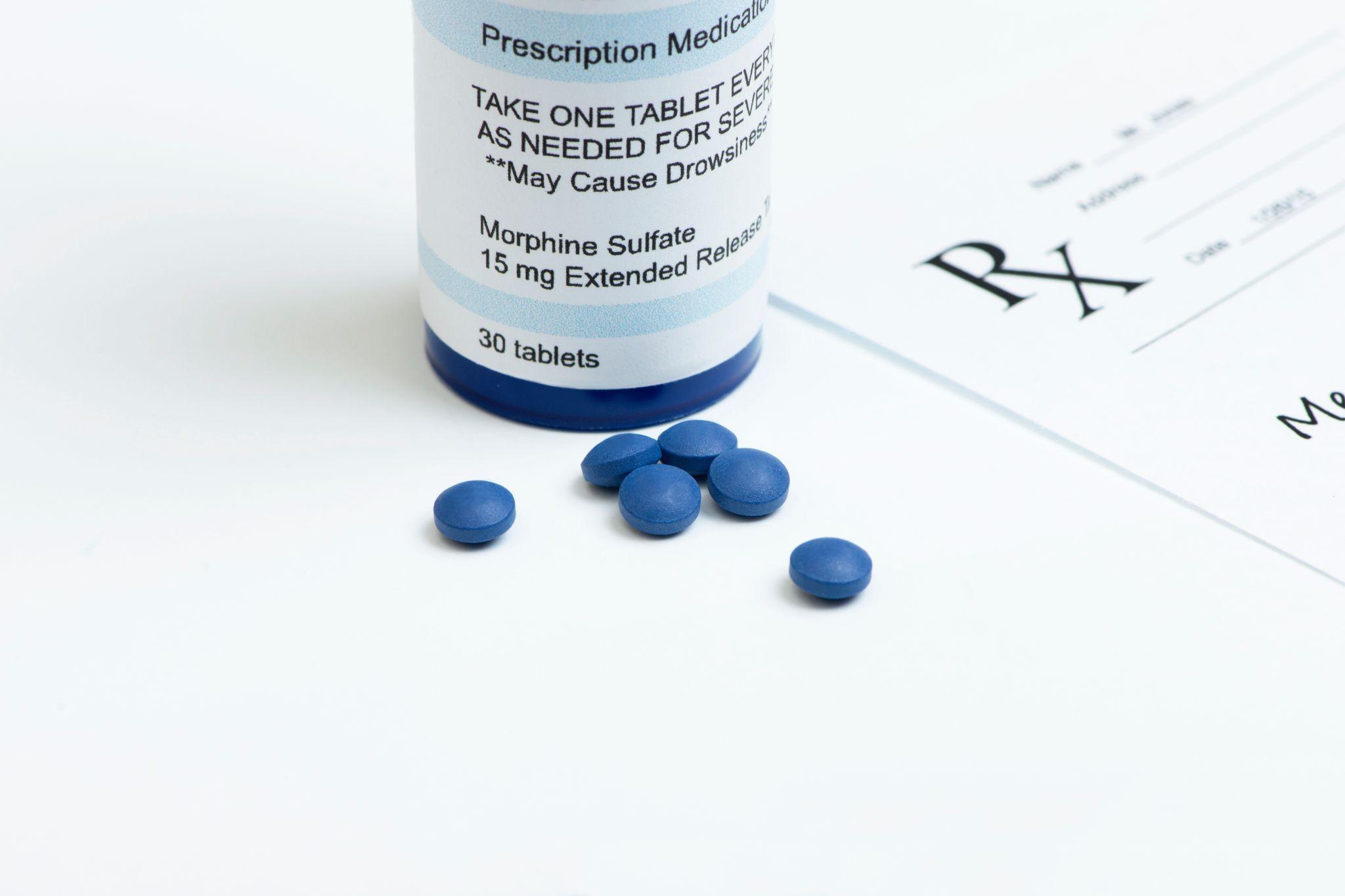Morphine is an opioid medication used to manage severe pain, typically prescribed after surgery or for serious health conditions. However, its effectiveness comes with a high risk of opioid use disorder.
Morphine addiction can disrupt lives, damage relationships, and lead to significant health complications. Understanding the signs and symptoms of addiction is crucial for early intervention and effective treatment.
What Is Morphine?
Morphine is derived from the opium poppy and is one of the most effective painkillers available in modern medicine. It works by binding to the body’s opioid receptors in the central nervous system, blocking pain and often inducing feelings of euphoria.
This combination of pain relief and pleasure can lead to psychological dependence and physical addiction. For someone in pain or for those around them, recognizing the difference between necessary medical use and problematic abuse can be challenging.1
Recognizing the Signs of Morphine Addiction
Understanding the signs of morphine dependence is crucial for timely intervention. By recognizing both subtle and overt changes in physical and behavioral well-being, individuals can identify potential addiction early, enabling quicker and more effective treatment.
Physical Symptoms
Physical symptoms and side effects of morphine addiction are often the most visible and measurable indicators. These symptoms reflect how the body reacts to the presence and absence of the drug, providing key insights into the physical dependence that has developed.
- Drowsiness and Sedation: Excessive sleepiness and a general lethargic state that interferes with daily activities.
- Gastrointestinal Issues: Persistent stomach pain, cramps, nausea, and constipation, which are direct effects of opioid use.
- Dry Mouth and Headaches: Frequent discomforts such as dry mouth and persistent headaches.
- Small Pupils: Constricted pupils, often noticeable in various lighting conditions.
- Respiratory Depression: Shallow, slow breathing which can be life-threatening, often a result of high doses.
- Skin Changes: Blue or purple coloration of the skin indicating possible circulatory or oxygenation issues.
- Neurological Symptoms: Hallucinations, severe agitation, muscle twitching, and loss of coordination are severe and require immediate medical attention.
- Cardiovascular Issues: Irregular heartbeats or chest pain, particularly dangerous and potentially indicative of overdose.2
Behavioral Signs
Behavioral signs and symptoms of morphine abuse are changes in actions and lifestyle that may signal a problem. These behaviors often result from the psychological effects of addiction and the individual’s efforts to maintain their access to the drug.
- Doctor Shopping: This involves seeking prescriptions from multiple healthcare providers to obtain more of the medication, often under the pretenses of lost prescriptions or inadequate pain relief.
- Social Withdrawal: Withdrawal from social activities and isolation from friends and family are common as the individual may spend more time using or obtaining the drug.
- Secrecy and Deception: Individuals may lie about their drug use, the amount consumed, or methods of obtaining more, including hiding morphine or denying there is a problem.
- Mood Swings: Rapid and inexplicable changes in mood, ranging from euphoria when the drug is accessible to depression or irritability when it is not, are typical.
- Financial Problems: Uncharacteristic borrowing of money, selling possessions, or even stealing to fund the drug habit are signs that often emerge as the addiction progresses.
By understanding these expanded signs of morphine addiction, individuals and their loved ones can be better equipped to recognize the need for professional help. Early detection is key to managing the addiction effectively and moving towards recovery.
Risk Factors for Morphine Addiction
Morphine addiction often develops due to a combination of genetic, environmental, and personal factors. Understanding these risk factors can help in identifying vulnerabilities and implementing preventive measures:
- Genetic predispositions can play a role in addiction. Individuals with a family history of substance abuse are more likely to develop similar issues.
- Individuals suffering from mental health disorders, such as depression, anxiety, or post-traumatic stress disorder (PTSD), are at a higher risk of addiction, often using morphine to self-medicate.
- Chronic use of morphine, even when prescribed for legitimate medical reasons, increases the risk of dependency. The body’s tolerance to the drug escalates, necessitating higher doses for the same effect.
- A social environment that is supportive can deter drug use, whereas a stressful or enabling environment can increase the risk.
- Early use of opioids at a young age can influence brain development, increasing the likelihood of developing addictive behaviors later in life.
- Lack of knowledge about morphine’s addictive potential and the dangers of long-term use may lead individuals to misuse the drug.3
The Importance of Getting Help
Recognizing the need for help and taking the first step toward recovery is crucial in dealing with morphine addiction. Here’s why seeking help is vital:
Long-term use of morphine can lead to severe health issues, including respiratory depression, cognitive impairment, and potential overdose. Medical professionals can help prevent these outcomes.
Addiction can strain relationships with family members, friends, and colleagues. Rehabilitation and evidence-based therapy can help in rebuilding these bonds and improving social support, which is essential for recovery.
Addiction can consume an individual’s life, leading to a loss of productivity and a decline in overall well-being. Treatment under medical supervision helps individuals regain control and work towards a fulfilling life.
Addiction treatment centers provide comprehensive recovery programs, including detoxification, therapy, and support groups for morphine addiction treatment.
Seeking help can also avert potential legal issues related to drug acquisition and use, and help stabilize financial situations by stopping the high costs associated with obtaining the drug illicitly.
Take the First Step Towards Sobriety With Lumina Recovery
Understanding the signs, symptoms, and risk factors of morphine addiction is the first step toward addressing this challenging condition. If you or someone you love is showing signs of addiction, it’s crucial to acknowledge the problem and seek professional help.
At Lumina Recovery, we provide initial detoxification, dual diagnosis, therapy services, and more for those needing morphine addiction treatment.
Reach out for help today and start your journey to recovery to regain control of your life.
Sources:



